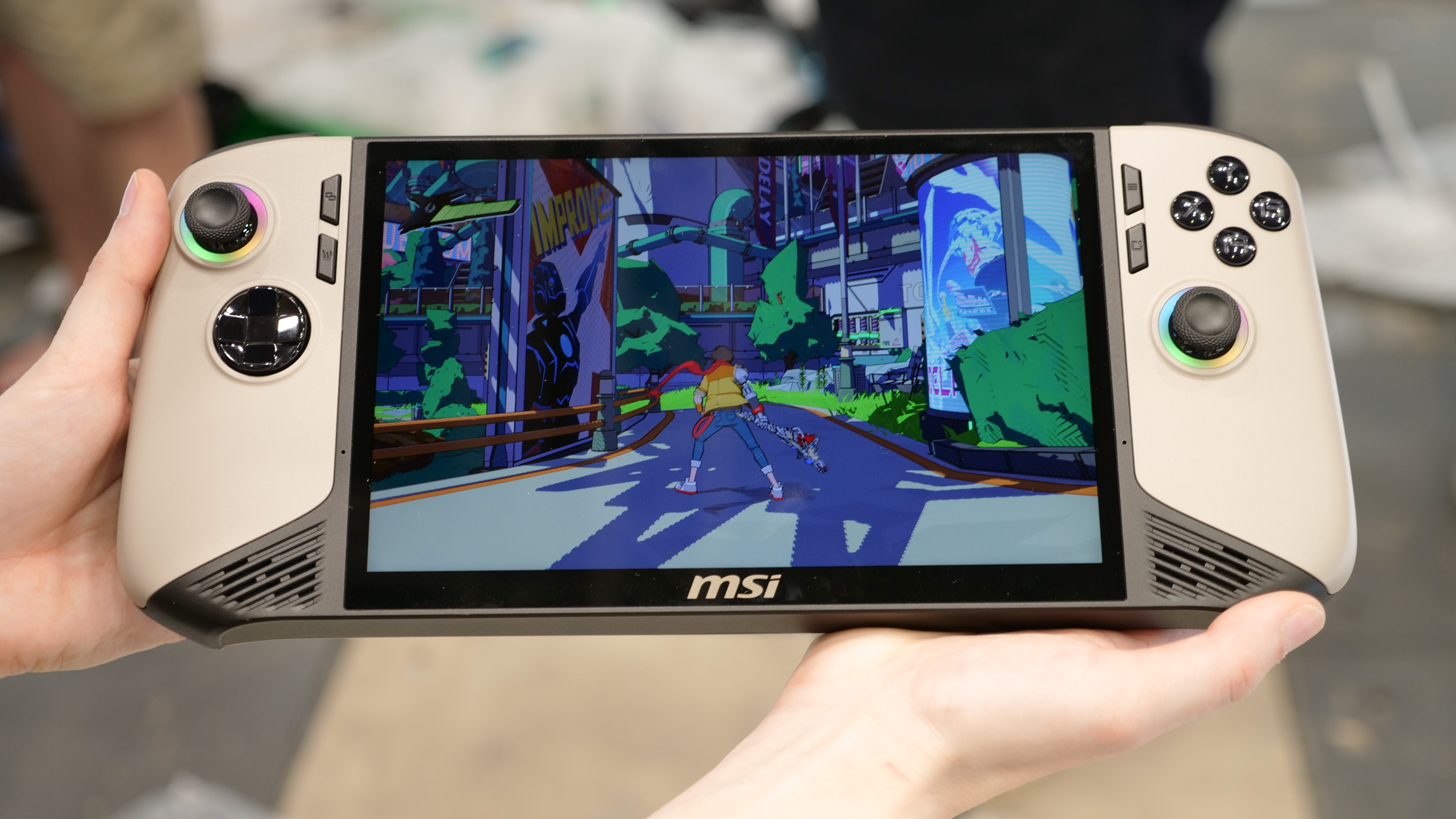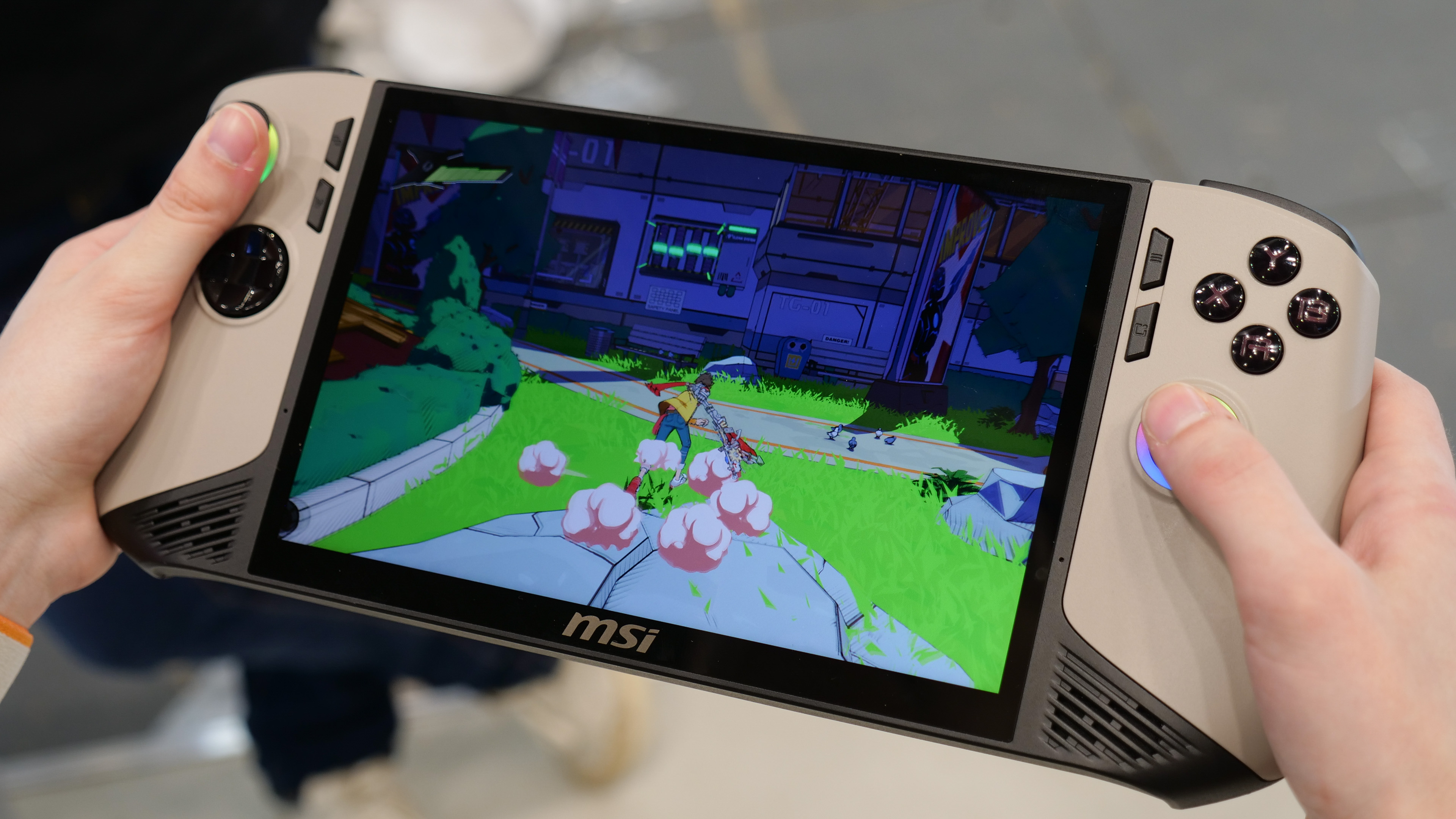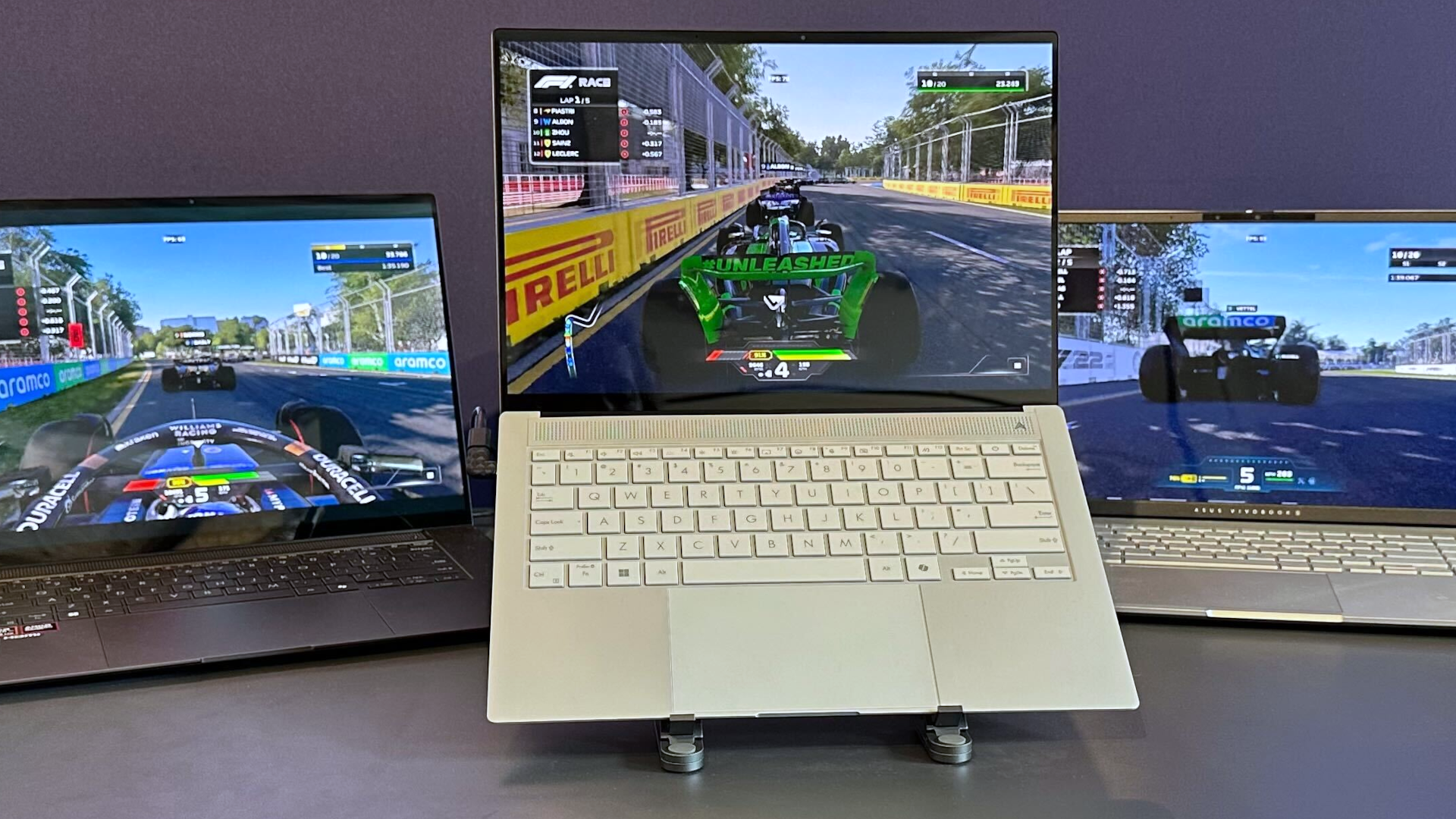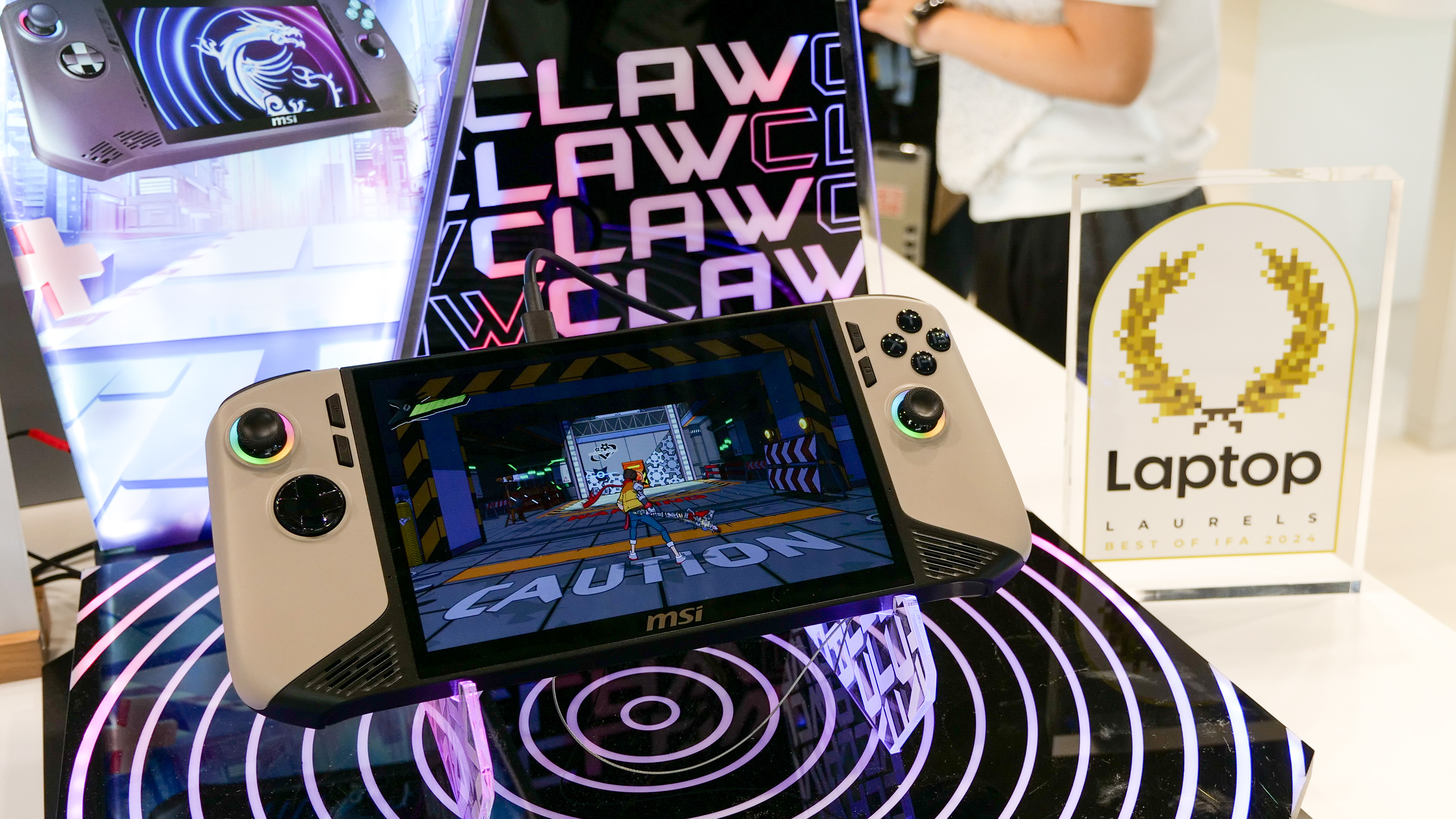
An updated integrated graphics card is one of the major overhauls coming with Intel's new Core Ultra 200V "Lunar Lake" processors. While most laptops using the new processor aren't optimized for gaming, handheld gaming PCs like the Asus ROG Ally X and MSI Claw 8 AI+ lean heavily on how well the iGPU can handle games.
We've talked a lot about Lunar Lake since the official launch ahead of IFA Berlin earlier this month, between hardware architecture breakdowns, gaming demos, battery life speculation, and benchmark previews, but we haven't done a dedicated deep-dive into the new processor's iGPU and how that might change the handheld gaming market.
Right now the MSI Claw 8AI+ is the only upcoming handheld gaming PC using the new Intel chips, as most other handheld gaming PCs have opted for either the AMD Ryzen Z1 Extreme or Ryzen 7 8840 processors. The original MSI Claw used Intel's previous AI chipset architecture, the Intel Core Ultra 5 135H or Intel Core Ultra 7 155H "Meteor Lake" processors. The Claw 8 AI+ not only upgrades the handheld's display and battery sizes, it also jumps to the new Intel hardware, including the new Xe2 integrated Arc graphics processor.
Between the hardware and software improvements to the new integrated Arc graphics chip on the Lunar Lake processors, the benchmarks we watched Intel perform, and the hands-on experience we were able to get at IFA, we're more positive than ever about the future of handheld gaming on Intel processors.
Xe2 GPU and XeSS

Intel has integrated a new Arc GPU inside the Lunar Lake Core Ultra 200V processors. The integrated GPU in the Core Ultra 200V chips features eight next-gen Xe2 cores, eight ray-tracing units, 8MB of cache, and XMX (Xe Matrix eXtensions) architecture for AI throughput. So the integrated Xe2 Arc GPU offers better graphics, real-time ray tracing, and AI-based upscaling.
The Xe2 GPU provides 31% faster graphics than the iGPU inside the Intel Core i7 155H chip. Intel calculated that metric by benchmarking 45 games on Medium settings at 1080p resolution, with the machines set to the "Best Performance" profile in Windows power settings.
Intel has also updated its XeSS super-sampling support to a library of over 120 games, with more optimizations still incoming. Intel claims that enabling XeSS on Lunar Lake can offer up to 60% faster gaming compared to Meteor Lake.
Based on the hardware and software gaming improvements, gaming on the new Core Ultra 200V series chips will be far smoother and shinier than on the Intel Core Ultra 100 series.
Benchmarks and first impressions

We haven't gotten a chance to benchmark any gaming handhelds running the Intel Lunar Lake chipset, but we can make some inferences from the benchmarks we do have. And we did get some hands-on gaming time with the MSI Claw 8 AI+ at IFA, which left us feeling pretty positive about the handheld overall thanks to multiple hardware improvements and a satisfying gaming experience.
Compared to AMD Ryzen AI 9 HX 370 and Qualcomm Snapdragon X Elite laptops running F1 2024 and F1 2022 on Medium settings at 1080p resolution, the Intel Core Ultra 200V "Lunar Lake" demo system left both competitors in the dust. One of our biggest complaints with the Qualcomm Snapdragon X Elite system was its pitiful gaming experience, especially since Qualcomm spent so much time talking up how well you could game on Snapdragon with the new processors. However, AMD did manage to impress us with the gaming experience on the Ryzen AI 300 Zenbook S 16. So if Lunar Lake can outperform the latest AMD integrated graphics card, that can only mean good things for the state of the Xe2 GPU.
We also got a benchmark preview at IFA, which kicked back some pretty impressive gaming numbers. On Medium presets at 1080p resolution, the Intel Core Ultra 200V systems provided respectable frame rates on Shadow of the Tomb Raider and Cyberpunk 2077. Clocking in with 74 fps on Tomb Raider and 60 fps on Cyberpunk, that's enough performance to put even some low-end discrete graphics cards to shame.
We also went hands-on with the upcoming MSI Claw 8 AI+, and it left us feeling excited about how improved the handheld felt while playing a bit of Hi-Fi Rush. After playing around with the handheld at IFA, Laptop Mag contributing writer Stevie Bonifield commented, "The MSI Claw 8 AI+ makes a positive first impression, one that gives me hope it could live up to the promises of the original, and maybe even exceed them."
Outlook

If Intel's Core Ultra 200V processors and Xe2 integrated graphics cards can get performance close to what we've seen so far in the benchmarks and demos, we could see an Intel-based handheld gaming PC like the MSI Claw 8 AI+ outperform its AMD rivals.
Obviously, we'll have to wait a bit for the MSI Claw 8 AI+ to end up in our hands and run through our lab benchmarks and hands-on testing, but things do look pretty optimistic for MSI's second handheld. And if the Claw 8 AI+ does well, we could see more handheld gaming PCs powered by Intel processors. If that happens, we will see a shake-up in the handheld PC market, as it is currently dominated by the Steam Deck and Asus ROG Ally.







